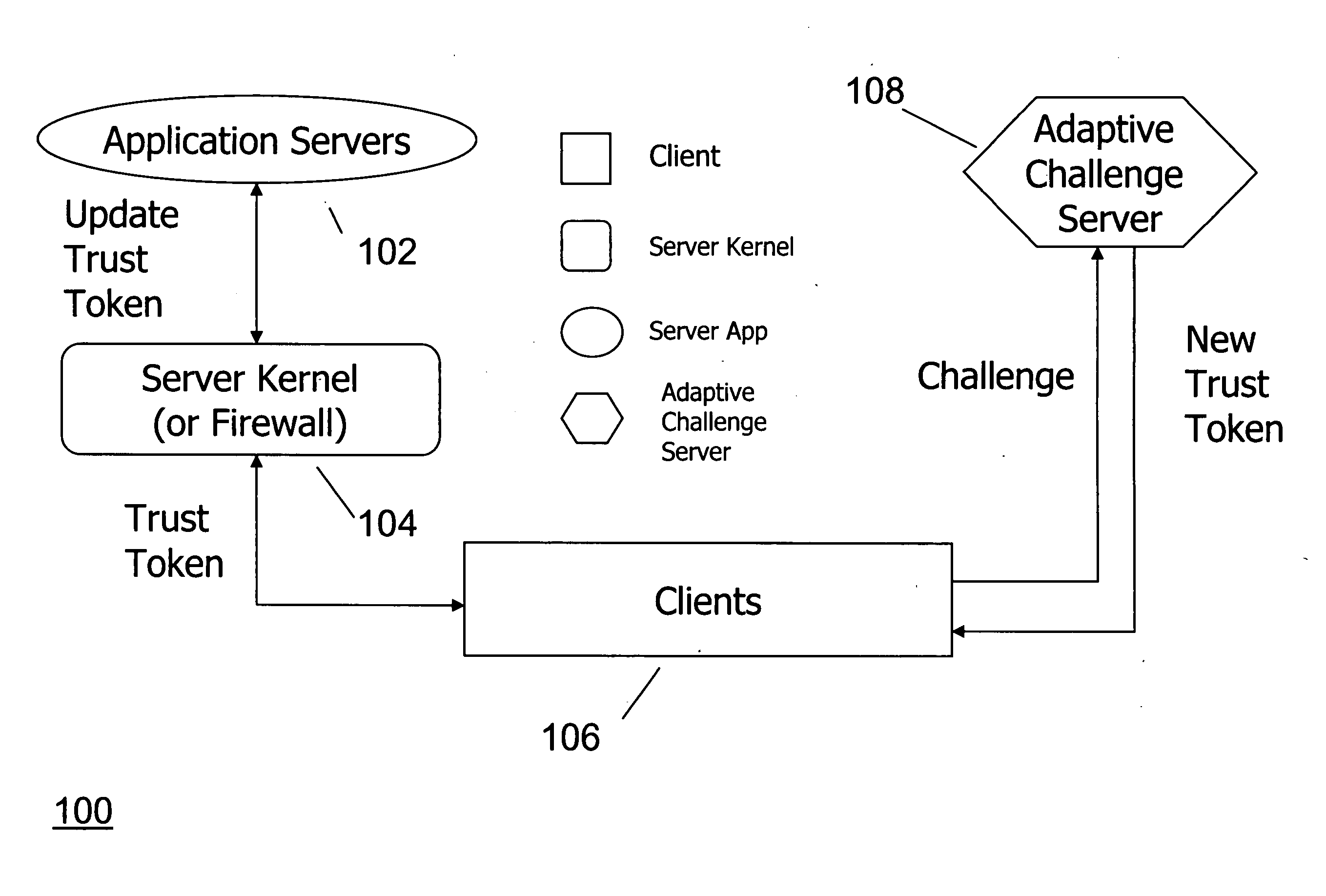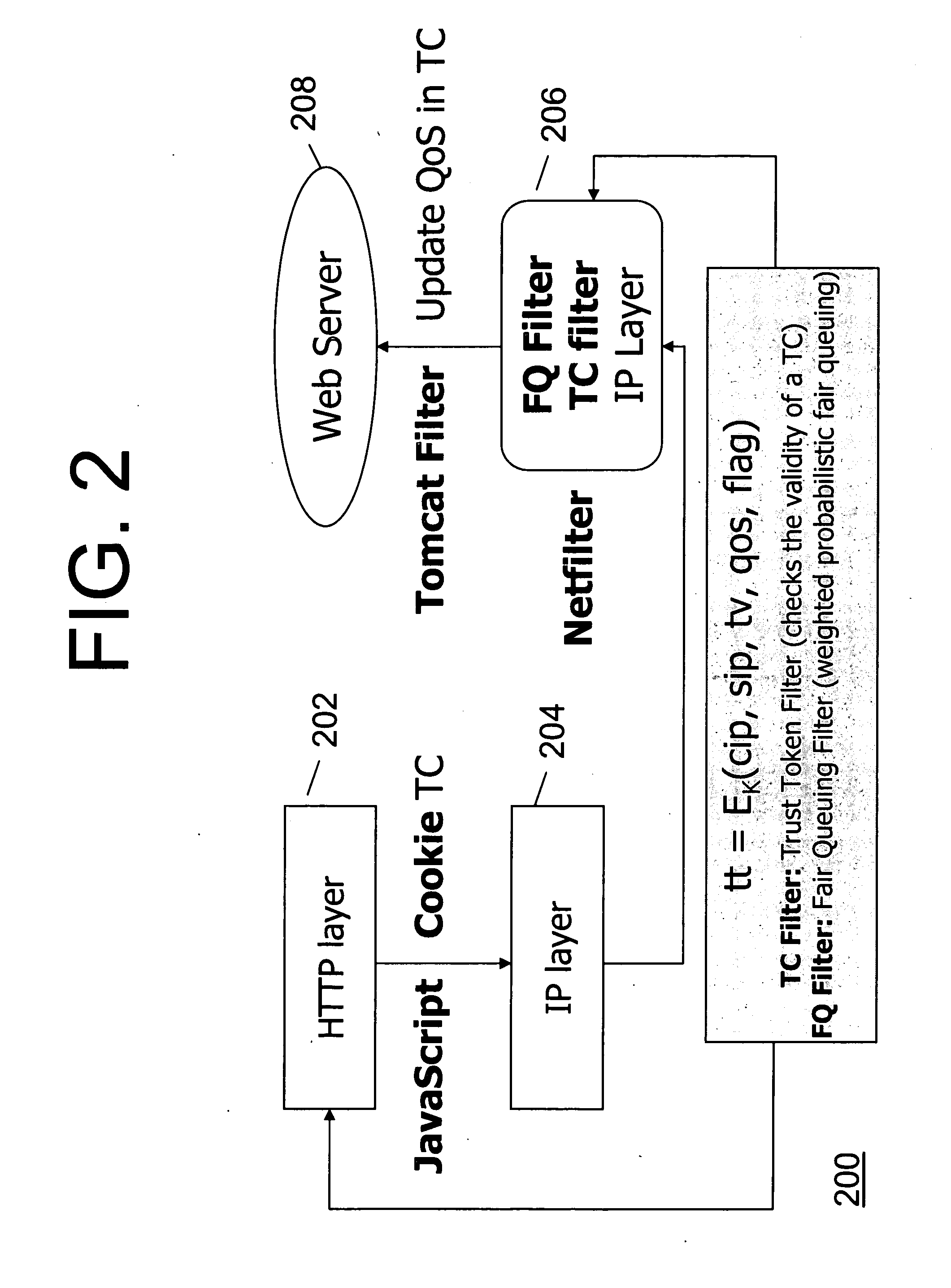Method and system for protecting against denial of service attacks using trust, quality of service, personalization, and hide port messages
a denial of service and port message technology, applied in the field of information, can solve the problems of difficult detection of application level dos attacks, difficult detection of sequence of attack requests from sequence of legitimate requests, and difficult detection of sequence of attack requests by any dos filter
- Summary
- Abstract
- Description
- Claims
- Application Information
AI Technical Summary
Problems solved by technology
Method used
Image
Examples
Embodiment Construction
[0020] According to an embodiment of the invention, a mechanism protects an online e-Commerce website against application level DoS attacks. Our mechanism does not attempt to distinguish a DoS attack request from the legitimate ones. Instead, our mechanism examines the amount of resources expended by the server in handling a request, rather than the request itself. We use the utility of a request and the amount of server resources incurred in handling the request to compute a score for every request. We construct a feedback loop that takes a request's score as its input and updates the client's priority level. In its simplest sense, the priority level might encode the maximum number of requests per unit time that a client can issue. Hence, a high scoring request increases a client's priority level, thereby permitting the client to send a larger number of requests per unit time. On the other hand, a low scoring request decreases a client's priority level, thereby limiting the number ...
PUM
 Login to View More
Login to View More Abstract
Description
Claims
Application Information
 Login to View More
Login to View More - R&D
- Intellectual Property
- Life Sciences
- Materials
- Tech Scout
- Unparalleled Data Quality
- Higher Quality Content
- 60% Fewer Hallucinations
Browse by: Latest US Patents, China's latest patents, Technical Efficacy Thesaurus, Application Domain, Technology Topic, Popular Technical Reports.
© 2025 PatSnap. All rights reserved.Legal|Privacy policy|Modern Slavery Act Transparency Statement|Sitemap|About US| Contact US: help@patsnap.com



